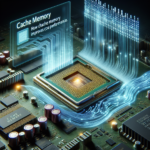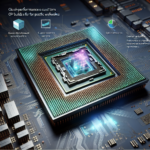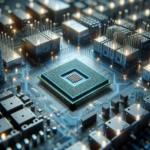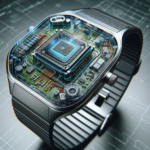Understanding the Role of CPUs in Internet of Things (IoT) Devices

Understanding the Role of CPUs in Internet of Things (IoT) Devices
The Internet of Things (IoT) is revolutionizing the way we interact with the world around us. From smart homes to industrial automation, IoT devices are becoming an integral part of our daily lives. At the heart of these devices lies the Central Processing Unit (CPU), a critical component that drives their functionality. This article delves into the role of CPUs in IoT devices, exploring their importance, types, and future trends.
What is a CPU?
The Central Processing Unit (CPU) is often referred to as the “brain” of a computer. It performs the essential task of executing instructions from programs, making it a crucial component in any computing device. In the context of IoT, the CPU is responsible for processing data, running algorithms, and managing communication between different components of the device.
The Importance of CPUs in IoT Devices
Data Processing
IoT devices generate vast amounts of data from various sensors and inputs. The CPU processes this data, enabling the device to perform its intended functions. For example, in a smart thermostat, the CPU processes temperature data to adjust heating or cooling systems accordingly.
Real-Time Operations
Many IoT applications require real-time data processing and decision-making. The CPU ensures that these operations are carried out efficiently and promptly. In autonomous vehicles, for instance, the CPU processes data from cameras and sensors in real-time to make driving decisions.
Energy Efficiency
Energy efficiency is a critical consideration in IoT devices, especially those that rely on battery power. Modern CPUs are designed to be energy-efficient, balancing performance with power consumption. This is particularly important in wearable devices and remote sensors.
Security
Security is a significant concern in IoT applications. The CPU plays a vital role in implementing security protocols, encrypting data, and ensuring secure communication between devices. This helps protect sensitive information from cyber threats.
Types of CPUs in IoT Devices
Microcontrollers (MCUs)
Microcontrollers are compact integrated circuits that contain a CPU, memory, and input/output peripherals. They are commonly used in IoT devices due to their low power consumption and cost-effectiveness. Examples include the Arduino and ESP8266.
System on Chip (SoC)
A System on Chip (SoC) integrates all components of a computer or electronic system into a single chip. SoCs are used in more complex IoT devices that require higher processing power and advanced functionalities. Examples include the Raspberry Pi and Qualcomm Snapdragon.
Application-Specific Integrated Circuits (ASICs)
ASICs are custom-designed chips tailored for specific applications. They offer high performance and energy efficiency but are more expensive to develop. ASICs are used in specialized IoT applications such as medical devices and industrial automation.
Factors to Consider When Choosing a CPU for IoT Devices
Performance
The performance of the CPU is a critical factor, especially for applications that require real-time data processing. The CPU’s clock speed, number of cores, and architecture determine its performance capabilities.
Power Consumption
Power consumption is a crucial consideration for battery-powered IoT devices. Energy-efficient CPUs help extend battery life and reduce the need for frequent recharging or replacement.
Cost
The cost of the CPU can significantly impact the overall cost of the IoT device. It’s essential to balance performance and cost to ensure the device is economically viable.
Compatibility
Compatibility with other components and software is vital for seamless integration. The CPU should support the required communication protocols, operating systems, and development tools.
Future Trends in CPUs for IoT Devices
Edge Computing
Edge computing involves processing data closer to the source rather than relying on centralized cloud servers. This reduces latency and bandwidth usage. Future CPUs for IoT devices will likely have enhanced capabilities for edge computing, enabling faster and more efficient data processing.
Artificial Intelligence (AI) Integration
AI is becoming increasingly important in IoT applications. Future CPUs will likely have built-in AI capabilities, enabling devices to perform complex tasks such as image recognition, natural language processing, and predictive maintenance.
Enhanced Security Features
As cyber threats continue to evolve, future CPUs will incorporate advanced security features to protect IoT devices. This includes hardware-based encryption, secure boot processes, and real-time threat detection.
Energy Harvesting
Energy harvesting involves capturing and storing energy from external sources such as solar, thermal, or kinetic energy. Future CPUs may incorporate energy harvesting technologies to power IoT devices, reducing reliance on batteries and external power sources.
FAQ
What is the role of a CPU in an IoT device?
The CPU in an IoT device is responsible for processing data, running algorithms, and managing communication between different components. It ensures the device performs its intended functions efficiently and effectively.
Why is energy efficiency important for IoT CPUs?
Energy efficiency is crucial for IoT devices, especially those that rely on battery power. Energy-efficient CPUs help extend battery life, reduce the need for frequent recharging or replacement, and lower overall power consumption.
What are the different types of CPUs used in IoT devices?
The main types of CPUs used in IoT devices are Microcontrollers (MCUs), System on Chip (SoC), and Application-Specific Integrated Circuits (ASICs). Each type has its advantages and is suited for different applications.
How do CPUs contribute to the security of IoT devices?
CPUs play a vital role in implementing security protocols, encrypting data, and ensuring secure communication between devices. This helps protect sensitive information from cyber threats and unauthorized access.
What future trends can we expect in CPUs for IoT devices?
Future trends in CPUs for IoT devices include enhanced capabilities for edge computing, built-in AI integration, advanced security features, and energy harvesting technologies. These advancements will enable more efficient, secure, and sustainable IoT applications.
Conclusion
The CPU is a fundamental component of IoT devices, driving their functionality and performance. From data processing and real-time operations to energy efficiency and security, the CPU plays a crucial role in ensuring the success of IoT applications. As technology continues to evolve, future CPUs will incorporate advanced features such as edge computing, AI integration, enhanced security, and energy harvesting, paving the way for more innovative and efficient IoT solutions.




